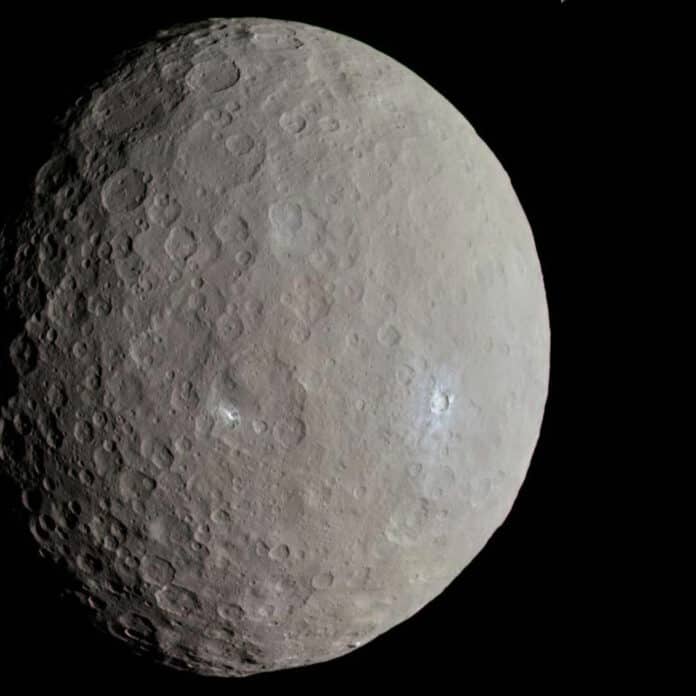Low-albedo asteroids preserve a record of the primordial Solar System planetesimals and the conditions in which the solar nebula was active. However, the origin and evolution of these asteroids need to be better constrained.
In a new study, an international research team, including geoscientists from Heidelberg University, has successfully measured a heretofore unknown class of asteroids. The infrared range measurements could lead to the identification of a heretofore unknown class of asteroids.
Similar to the dwarf planet Ceres, they are abundant in water and are situated in the asteroid belt between Mars and Jupiter. Computer simulations suggest that shortly after their formation, complicated dynamic processes moved these asteroids from the outer reaches of our Solar System into the present-day asteroid belt.
The dwarf planet Ceres is the biggest asteroid between Mars and Jupiter, with an equatorial diameter of roughly 900 kilometers. This area is also home to many additional tiny planets.
Prof. Dr. Mario Trieloff from the Institute of Earth Sciences of Heidelberg University said, “These are the remains of the building materials from which the planets of our Solar System were created four and a half billion years ago. In these small bodies and their fragments, the meteorites, we find numerous relics that point directly to the process of planet formation.”
“The current study shows that the small astronomical bodies originate from all regions of the early Solar System. By means of small bodies from the outer Solar System, water could have reached the still growing Earth in the form of asteroids because the building blocks of the planets in the inner Solar System tended to be arid.”
Dr. Driss Takir at the NASA Infrared Telescope facility at the Mauna Kea Observatory in Hawaii (USA) said, “The astronomical measurements permit the identification of Ceres-like asteroids with a diameter as small as 100 kilometers, presently located in a confined region between Mars and Jupiter near Ceres’ orbit.”
“At the same time, the infrared spectra support conclusions as to the bodies’ chemical and mineralogical composition. Like Ceres, there are minerals on the surface of the discovered asteroids that originated from interaction with liquid water.”
Dr. Wladimir Neumann, a member of Prof. Trieloff’s team, said, “Shortly after the formation of the asteroids, temperatures were not high enough to convert them into a compact rock structure; they maintained the porous and primitive character typical of the outer ice planets located far from the Sun.”
These Ceres-like objects may have first originated in a chilly region at the frontier of our Solar System, according to the characteristics of the objects and their location in a relatively small area of the outer asteroid belt.
Gravitational perturbations altered these asteroids’ trajectories in the orbits of massive planets like Jupiter and Saturn, sometimes known as “giant planet instability,” which caused the asteroids to become “implanted” in the present-day asteroid belt. The scientists’ computer estimates on trajectory developments in the early Solar System were used to illustrate this.
Journal Reference:
- Takir, D., Neumann, W., Raymond, S.N. et al. Late accretion of Ceres-like asteroids and their implantation into the outer main belt. Nat Astron (2023). DOI: 10.1038/s41550-023-01898-x
